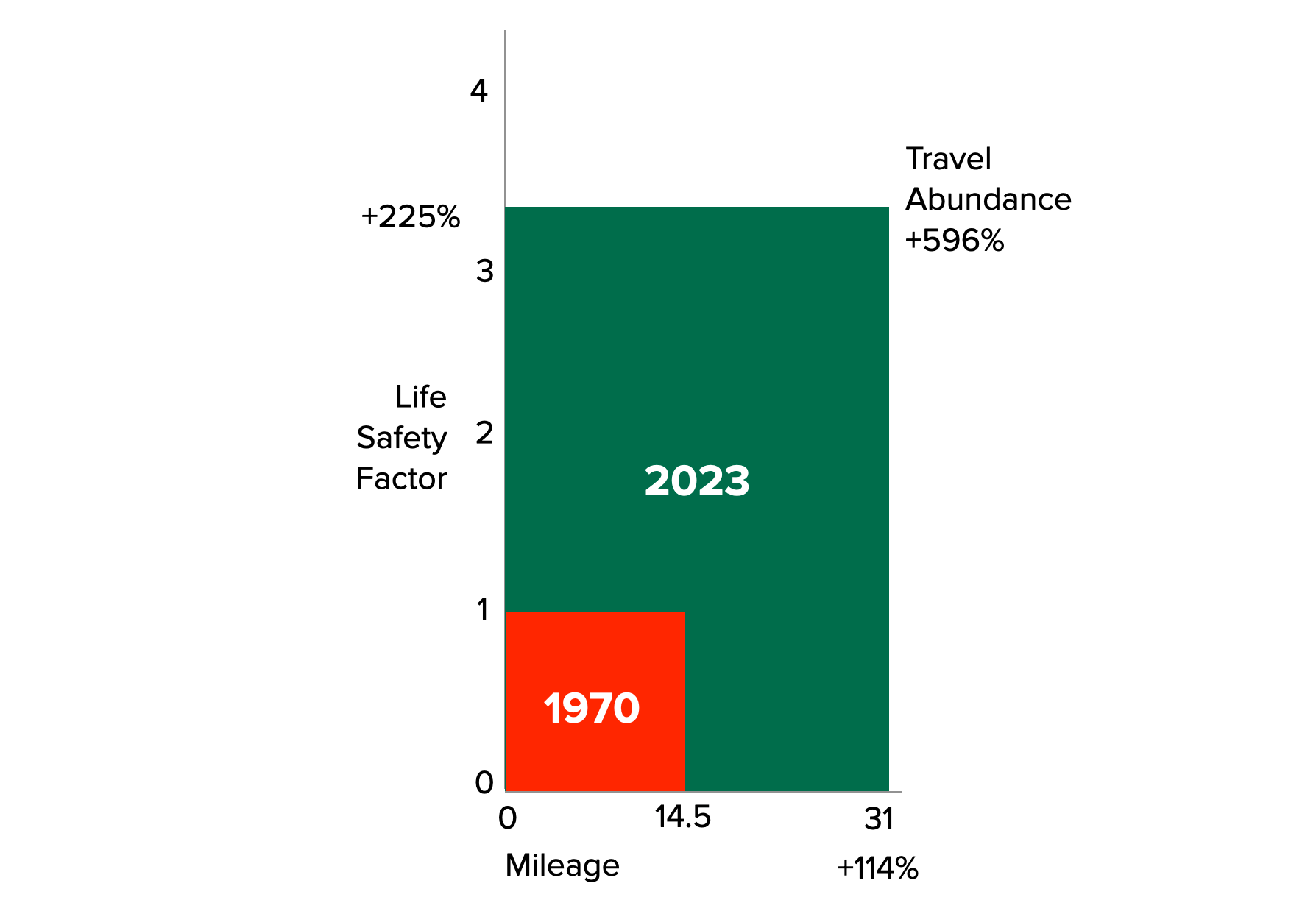The top-selling car in 1980 was the Oldsmobile Cutlass. Gas mileage on this vehicle averaged 20 miles per gallon (17 city/23 highway). By 2023, the Honda CR-V claimed the title as the most popular two-wheel drive vehicle. The CR-V reported mileage at 31 miles per gallon (28 city/34 highway). This represents an increase of 55 percent over this 43-year period. Mileage has been increasing at a compound rate of around 1 percent a year.
Back in 1980, gasoline was selling for $1.19 per gallon, and blue-collar hourly compensation (wages and benefits) was $9.12 per hour. This indicates a time price rate of around 7.83 minutes per gallon.
Today, gasoline is selling for around $3.37 per gallon, and blue-collar hourly compensation (wages and benefits) is up to $36.50 per hour, indicating a rate of around 5.54 minutes per gallon. While the nominal price of a gallon of gasoline has increased by 183 percent, the time price has dropped by 29 percent.

But how much does it cost to travel a mile? That depends on the time price of gasoline and the car’s mileage. In 1980, at 20 miles per gallon, the time price per mile on the Cutlass would be around 23.5 seconds. By 2023, with the CR-V getting 31 miles per gallon, the time price per mile would be around 10.7 seconds. The time price per mile has decreased by 54 percent.
You can look at mileage from the perspective of how many miles you get per minute of time. The 1980 Cutlass gave you 2.55 miles per minute of your time, while the 2023 CR-V gives you 5.6 miles. Gas mileage abundance from your time perspective has increased by 119 percent. For the time it took to get one mile in 1980, you get 2.29 miles today.

There are other differences to consider. The National Automobile Dealers Association reports the price of a new Cutlass in 1980 at $6,735. At $9.12 per hour, it would take a blue-collar worker 738 hours to own this new car. Honda listed the 2023 CR-V for $28,410. At $36.50 per hour, it would take the blue-collar worker 778 hours to buy one. So, while the time price of the top-selling car has increased by 5 percent, the mileage, safety, reliability, and comfort have all increased by much more.
Yes, nominal gas prices are higher than 1980, but it’s not the money that counts; it’s your time. Time prices are the true prices.
A version of this article was published at Gale Winds on 11/14/2023.





